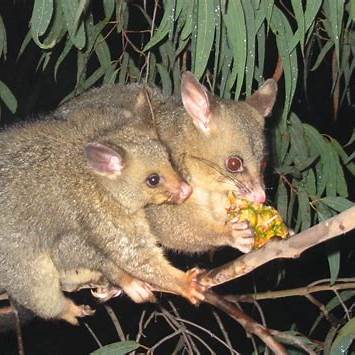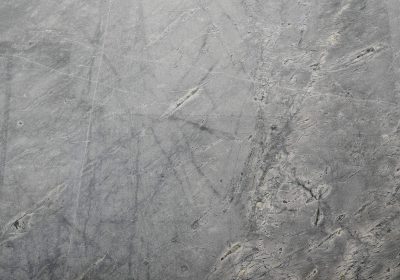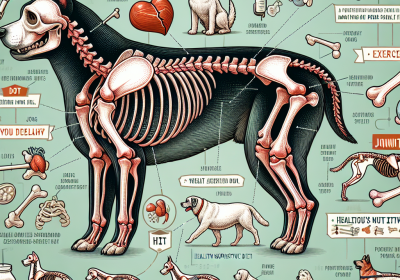Guide to Possums as Pests in the Australian Home
Overview of possums in Australia
Australia is home to 23 possum species, but homeowners usually encounter two: the common brushtail and common ringtail. Both are protected native wildlife and play important roles in ecosystems. When these nocturnal animals take up residence in roof cavities or sheds they become a nuisance, yet harming them is illegal and relocation is heavily regulated. This guide explains how to recognise a possum problem, the legalities of trapping, how to choose and use a humane cage, and where to buy one.

Attribution: Brushtail possum, Australia by wollombi, from Wikimedia Commons (https://commons.wikimedia.org/wiki/File:Brushtail_possum.jpg), licensed under CC BY 2.0.
Recognising a possum problem
Homeowners usually realise a possum has moved in because they hear scratching and thumping noises in the roof at night – possums are nocturnal and are most active between dusk and dawn. Other signs include:
- Strong odours – possum urine and faeces create an ammonia‑like smell; carcasses from trapped or dead possums can also produce a powerful odour.
- Droppings and damage – possums leave dark, oval‑shaped droppings near entry points and often chew electrical wiring, insulation and timber, creating fire hazards and costly repairs.
- Entry points – broken tiles, gaps under eaves or vents, and greasy rub marks around small openings suggest a possum’s access route.
- Unusual pet behaviour – dogs barking at ceilings or cats staring at walls may indicate an animal in the roof cavity.
Identifying entry points is crucial; block them only after the possum is removed so you don’t trap the animal inside.
Preventing possums without trapping
Possums usually enter a house in search of shelter. Before resorting to traps, try these humane prevention measures:
- Locate entry points – shove wads of waste paper into suspected holes during the day. After dark, the possum will push out the paper when it exits, revealing the entry and exit holesqld.gov.au.
- Seal access points – repair broken tiles or eaves once the possum has left to prevent re‑entry.
- Remove attractants – trim tree branches overhanging the roof, cover compost and rubbish bins, and avoid leaving pet food outside.
- Use repellents and odours – splash old entry areas with strong‑smelling disinfectant to destroy the possum’s scent trails.
- Provide an alternative nest – hang a nesting box or hollow log in a nearby tree to give the animal a safe place to live.
If these measures fail, consider engaging a licenced possum handler. Professionals remove the animal and install possum boxes to keep it out of your roof.
Legal considerations when trapping possums
Possums are protected by state and territory wildlife legislation. It is illegal to injure or kill them and relocation is tightly restricted. Before setting a trap, check the rules for your state:
Victoria
- Who can trap: Only homeowners/occupiers, their family members, building managers or staff and Department of Environment, Land, Water and Planning (DELWP)‑licensed wildlife controllers may trap a common brushtail possum inside a building.
- Type of trap: You must use a cage trap designed not to cause injury.
- Where and when to release: Possums must be released on the same property within 50 m of the capture site and at dusk on the day of capture. Relocating them any further is illegal.
- Restrictions: Only brushtail possums may be trapped; ringtail possums and other species must not be trapped without a special permit.
Queensland
- Permit requirement: Possums causing damage may only be removed by an appropriately authorised removal and relocation contractor who holds a Damage Mitigation Permit. Homeowners cannot legally trap possums themselves without a permit.
- Relocation distance: Possums are territorial and may only be relocated within 25 m of the point of capture; moving them further dramatically reduces their survival.
- House repairs: To prevent re‑occupation, entry points must be repaired when the possum is removed.
- Permit details: A damage mitigation permit allows a person to non‑lethally remove and relocate wildlife but requires the applicant to demonstrate the ability to handle animals humanely and to release them into suitable habitat at the earliest opportunity.
New South Wales (NSW)
- Licence requirement: NSW’s Department of Climate Change, Energy, the Environment and Water issues biodiversity conservation licences that permit persons or businesses to catch and release possums from propertiesenvironment.nsw.gov.au. Possum handlers operate under strict conditions to ensure human safety and animal welfare. Without this licence, homeowners must contact an authorised possum catcher.
South Australia
- Protected species: All possums are protected under the National Parks and Wildlife Act 1972. Homeowners must manage possums humanely and can either obtain a permit or hire a licenced possum controller. The Department recommends planning and preparation to increase the likelihood of success and minimise stress.
General legal principles
Regardless of the state, the following principles apply:
- Use humane traps only. Leg‑hold, snare or kill traps are illegal and inhumane.
- Check traps frequently. Traps must be checked at least every few hours. Provide water and shelter while the animal is captive.
- Release promptly at night. Possums must be released within 24 hours of capture and after sunset, ideally at dusk, to reduce stress and avoid daytime predators.
- Do not relocate far away. Possums are highly territorial; moving them far from their home range is illegal and may lead to starvation or death. Distances vary by state (25 m in Qld, 50 m in Vic). Always release on the same property or within the distance specified in your permit.
- Seek veterinary help for injuries. If the possum is injured or a dependent young is present, contact a veterinarian or wildlife rescue organisation – do not release the animal while injured.
Failing to follow these rules may result in fines or prosecution and, more importantly, can harm native wildlife.
Choosing a humane possum trap
When selecting a trap, look for a cage-style live capture trap that meets legal and welfare requirements:
- Size and strength: An ideal trap for brushtail possums is roughly 66 × 23 × 25 cm. Pestrol’s possum trap is this size and weighs about 3.3 kg, with a 2.5 mm wire mesh. The Gardeon trap also uses galvanised iron wire with a 2.5 mm cage wire, 4.0 mm support wire and 5.0 mm frame.
- Humane design: Look for traps without sharp edges and with fine mesh around the bait area so the possum can’t steal the bait without entering the cage. A spring‑loaded door with an automatic lock ensures the animal can’t escape once caught.
- Shielded handle: A covered handle protects you from scratches and reduces stress when carrying the trapped possum.
- Ease of use: The trap should assemble without tools and be easy to bait and set. Collapsible designs like the Gardeon trap fold for storage.
- Durable materials: Galvanised steel resists rust and ensures long life. Powder‑coating is less durable; Pestrol instead uses galvanised wire with a matte finish.
Avoid small or flimsy cages marketed for rats or rabbits; possums are larger and stronger.
Deploying and operating a possum trap
Preparation
- Check legal requirements: Obtain necessary permits or engage a licensed possum handler. Do not set a trap without confirming you can legally do so.
- Choose the location: Place the trap near the possum’s entry point or along its usual travel path. Ensure the area is sheltered from sun and rain.
- Pre‑baiting: For a few nights before setting the trap, place the bait inside but do not set the trap. This acclimatises the possum and reduces suspicion. Preferred baits include pieces of apple, pear, banana, melon or unpeeled orange; avoid meat or pet food as this may attract cats.
- Set the trap: After the pre‑baiting period, rebait the trap and set the door mechanism. Cover the cage with an old towel or hessian to make it dark and reduce stress.
Monitoring the trap
- Check frequently – at least every few hours during the night. Traps must never be left unattended overnight or all day in hot weather. Possums can overheat quickly.
- Deal with non‑target animals – If another species (e.g. a cat) is caught, release it immediately. The national humane trapping standard requires that non‑target animals be examined and released unharmed.
Handling and releasing
- Wear protective gloves – Possums can scratch or bite. Use leather gloves or consider purchasing “possum trap gloves” offered as an accessory with some traps.
- Cover the trap – A dark cloth calms the animal. Keep the trap level when moving to minimise injury.
- Release at dusk within the permitted distance – Under Victorian rules, release on your property within 50 m; in Queensland, within 25 m. Open the trap door facing away from you and allow the possum to leave. If a joey is clinging to its mother, do not separate them; call a wildlife rescuer.
- Provide a nesting box – Hang the box in a nearby tree so the possum has a new den.
- Seal entry points – Only after release should you repair the roof or eaves. Splash old entry points with disinfectant to deter re‑entry.
Aftercare
Observe the release area for a few nights to ensure the possum uses the nesting box. Continue to remove attractants and prune overhanging branches to prevent new animals moving in.
Ethical considerations and common questions
- Why can’t I relocate a possum far away? Possums are territorial; moving them beyond their home range can cause starvation or territorial conflicts and is illegal. Queensland regulations restrict relocation to 25 m and Victoria to 50 m.
- Do I need a licence? Homeowners in Victoria may trap a brushtail possum in a building without a licence but must follow strict conditions. Queensland, NSW and South Australia require permits or licensed handlers.
- Can I trap a ringtail possum? No. Ringtail possums are protected and cannot be trapped except by permit in limited circumstances.
- What if the possum is injured or with young? Do not release injured animals. Contact a wildlife carer or vet. If a female is carrying young, delay relocation until the young can fend for themselves (often 4–5 days).
- How long can I keep a possum in the trap? Possums must be released within 24 hours and must not be kept without food, water and shelter.
Recommended suppliers of humane possum traps
- Pestrol Possum Trap – Available online at pestrol.com.au/buy-online/possum-trap. Pestrol’s trap is a galvanised cage measuring 66 × 23 × 25 cm, with a 2.5 mm wire mesh, extra‑fine mesh around the bait area, shielded handle, and quick tool‑free assembly. It is designed to prevent injuries, assemble in seconds and make transport easy. Price when reviewed (Aug 2025) was ≈ AUD 49.90.
- Squish’Em Possum Cage – Sold by Squish’Em Pest Supplies (approx. AUD 90). The product page notes that the common ringtail and brushtail possums are protected and recommends trapping and blocking access before re‑releasing the possum. This cage is robust and suitable for homeowners who need a ready‑made solution.
- Gardeon Humane Animal Trap Cage – Offered through Gardeon and other retailers, this collapsible cage features a spring‑loaded door, automatic lock, galvanised iron wire construction (2.5 mm cage wire, 4 mm support wire), and measures 66 × 23 × 25 cm. The design makes it easy to store and transport and is marketed for humane capture of backyard pest animals.
Other hardware stores (such as Bunnings or Mitre 10) and local pest control suppliers also sell humane possum traps. Always confirm that any trap meets the legal and welfare requirements for your state and species.
Possums are charismatic native mammals that can become troublesome housemates. Because they are protected, dealing with them requires a compassionate and law‑abiding approach. Recognising the signs of a possum invasion early and implementing exclusion techniques can often solve the problem without trapping. If trapping is necessary, ensure you understand your state’s regulations, use a properly designed humane cage and release the animal promptly and locally. By following the advice in this guide you can protect your home while respecting Australia’s wildlife.
Sources
- West Wimmera Shire Council – conditions for trapping brushtail possums: only certain people may trap; cage traps must not injure; possums must be released on the same property within 50 m and at dusk; ringtail possums cannot be trapped https://westwimmera.vic.gov.au.
- Queensland Government (Removal of snakes, possums and pests) – guidance on finding entry points, making repairs, using strong‑smelling disinfectants, providing nesting boxes and the 25 m release rule https://qld.gov.au .
- Rockhampton Regional Council – possum relocation within 25 m; removal must be done by authorised contractors; repairs are essential; Department issues damage mitigation permits rockhamptonregion.qld.gov.au.
- Queensland Government – Damage mitigation permit summary: allows non‑lethal removal and relocation of problem wildlife; applicants must show they can remove animals safely and release them into suitable habitat parks.desi.qld.gov.au.
- Humane Possum Removal Brisbane – explains that a wildlife permit is required; animals must be released within 20–25 m; guidelines for wildlife permits https://humanepossumremovalbrisbane.com.au humanepossumremovalbrisbane.com.au.
- South Australian Department for Environment and Water – states that all possums are protected; homeowners must manage possums humanely; permits or licensed controllers are required; planning increases success https://environment.sa.gov.au.
- Pestrol – possum trap features: galvanised cage 66 × 23 × 25 cm, 2.5 mm mesh, shielded handle, fine mesh around bait, quick assembly, no injuriespestrol.com.au.
- Gardeon humane trap – features include collapsible design, spring‑loaded door, automatic lock, galvanised iron wire construction, and specification details gardeon.com.au.
- Squish’Em Pest Supplies – notes that ringtail and brushtail possums are protected and recommends trapping, blocking access and re‑releasing; provides product https://contextsquishempestsupplies.com.au.
- Enviro Safe Pest Control blog – signs of possum infestation such as nocturnal noises, strong odours, droppings, damage to wiring, entry points and pet behaviour envirosafepestcontrol.com.au.









